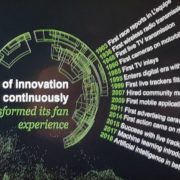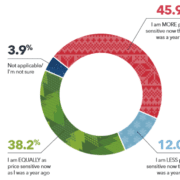The Future of AI and Your Working Life – Start Planning
The future of AI and threat to our jobs is a popular topic for news recently. But here is a positively helpful book to help you respond.
Unlike so much that is written on this topic, , Tony Boobier‘s latest book focusses on a positive response. It also investigates the implications of AI at a deeper level than most analysis.
Whilst many books have been written that focus on explaining AI, or focussing on the technology, this book focuses on jobs. Tony includes extensive research and careful analysis. He takes us through most sectors, to understand opportunities and threats.
I’m grateful to have had an early copy of Tony’s book, “Advanced Analytics and AI“. Let me explain why it is worth reading, both for your role now and your future career advice.
Never mind understanding AI, do you understand Work?
Tony is a man who has read widely. His polymath nature really shines through the start of this book. The subtitle to his book hints at the breath he explores, “Impact, Implementation and The Future of Work“.
Rather than just focussing on AI, Tony usefully starts by exploring the history of work. From slavery to the “flat white economy“, he engagingly muses on both our need for work and how we recognise and value our abilities. This mindset guides his later exploration.
He goes on to provide some useful definitions of Analytics and AI. Helpfully calling out the lack of clarity and misuse of both terms that abounds. From Business Intelligence to Advanced Analytics and Prescriptive Analytics. Plus, Rules-based Systems and Cognitive Analytics. Tony manages to understand the purist distinctions and be pragmatic about what matters.
Going on to define AI, with particular reference to the Turing Test, Tony briefly walks us through the history of AI development. As someone who worked in AI before the “AI Winter“, I recognise many of his examples and why the recent renaissance might be different.
Learning from AI in Leading-Edge Industries
His list of leading-edge industries is always going to be controversial. But, given the investments that I have seen being made, I think there’s a good case for his selection. It includes Financial Services, Automobiles, Media/Entertainment/Telco and Retail.
This chapter begins what is the heart of this book and its differentiation. For each sector (e.g. Insurance), Tony outlines that the relevance of AI and how it might replace some of the work currently done by humans.
His analysis is pragmatic. He points out challenges, difficulties and where either consumers may not accept technology or the risks are too great. Tony does identify useful opportunities for AI innovation. He also suggests where those working in that sector can still add value.
The detail provided on so many diverse roles is particularly impressive. This is a well researched book and a result of many years working in some of these sectors. Tony is also pragmatic in his identification of applications. From robo-advice to automated cars or supply chains, he calls out real progress and work still to be done.
AI progress within Second-Mover Industries
Given a media focus on AI within leading-edge industries (e.g. autonomous vehicles), it is interesting to look elsewhere. Reading through the previous chapter, it became obvious that a number of AI innovations should be transferable.
In this chapter, Tony reviews those sectors who are beginning to apply pilots based on the above successes. From Construction, to Utilities, Public Sector and Agriculture. He challenges us to see how widespread adoption of AI could transform these jobs.
From Smart Homes to connected infrastructure, predictive policing to automated harvesting. Tony presents a picture of not just a threat to jobs, but a different way of working, that has subtly different challenges for each sector.
His challenges to previously accepted hierarchies and divisions between sectors are also important. With automated delivery of supply chains, previously separate industries could merge in new ways. One of many indications of the need for creative thinking by leaders.
The future of AI and its impact on Professions
My own experience of seeking to get offshoring of analytics to work has taught me to be skeptical of hype. At the time many commentators predicted the offshoring of ‘white collar’ or professional jobs. This proved limited, as the model ended up only working well for well prescribed repeatable processes.
We have also been this way before with AI. As Tony mentions, the hey day of ‘expert systems‘ in the 1990s predicted at least decision support for many professional roles. Hopes that withered during the AI Winter.
So, I read Tony’s chapter on the impact of AI on professional roles with some skepticism. That said, he does make a convincing case across a much wider range of professions than many would consider. Not limited to doctors, teachers and lawyers. Tony highlights the implications for AI delivering management, finance, engineering and even creative roles.
At the very least Tony makes the case for opportunities and uncertainty – as a challenge for managers and entrepreneurs in this space. The role AI could play is still only starting to be defined for most professions and planning would help.
Let’s stop pretending Data Science and AI are risk free
Apart from extreme predictions of the end of humanity in robot wars, many articles suggest the rise of AI will be smooth. One might think it was risk free and in line with the continual improvement of human condition. Whereas, so much that has gone wrong already should cause us to be circumspect.
Tony rightly includes a chapter summarising these risks. From system failures to data privacy, employee error to reputational risk. Considering the role of the maturing Regulation Technology (RegTech) sector, it is clear that does not provide all the answers.
Risk management, as for other sectors, needs a balance to be struck between automated efficiency and human judgement.
Prepare for your career in the future of AI
The most useful contribution of this book to society, is the way that Tony ends it. In his final 4 chapters Tony reviews:
* Potential AI implementation roadmaps
* New business models(made possible by AI)
* Coping with the future (societal considerations)
* Strategies for personal reinvention
That final chapter should be required reading for all those who will still be working in 20 years time. Tony challenges readers to reflect on their motivations and needs, not just popular options.
As Tony encourages, now is not the time for humanity to fade away into a passive life of leisure. This is a time for careful consideration and design. Planning how a powerful technology can serve humanity and avoid many pitfalls.
How are you preparing for the way AI will change your work?
I hope you found that book review useful. That it provokes your thinking, about how AI will change your future career.
From InsurTechto jobs to avoid, Tony gives plenty of food for thought. It is also well worth checking his appendices, as resources for data. They cover implementation flowcharts, lists of jobs most affected by AI, and professional bodies to advise you.
If you want to buy a copy of this book, you can get it here.
Paul is the founder of Laughlin Consultancy, a business which helps companies generate sustainable value from their customer insight. This includes growing their bottom line, improving customer retention and evidencing to regulators they treat customers fairly. He also provides executive coaching to ensure leaders can sustain this performance.
Former Head of Customer Insights for both Lloyds Banking Group Insurance and Scottish Widows, he has over 13 years experience of creating & improving customer insight teams and 25 years experience of deriving value from data. His teams have added over £10m incremental profit per annum, through improvements to customer acquisition & experience.
Paul is in demand as an international speaker & blogger on customer insight, including his own site: customerinsightleader.com.
- Getting Agile really working outside of IT requires culture change - February 13, 2020
- The need for analysts to have improved commercial awareness - January 8, 2020
- Don’t Neglect the Political Dimension of Applying Analytics or Insight - May 17, 2019







